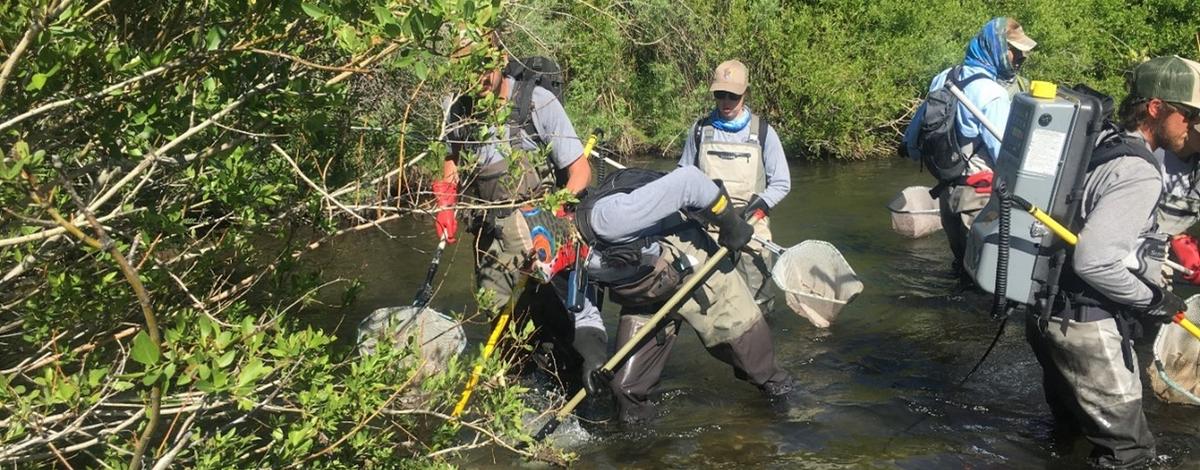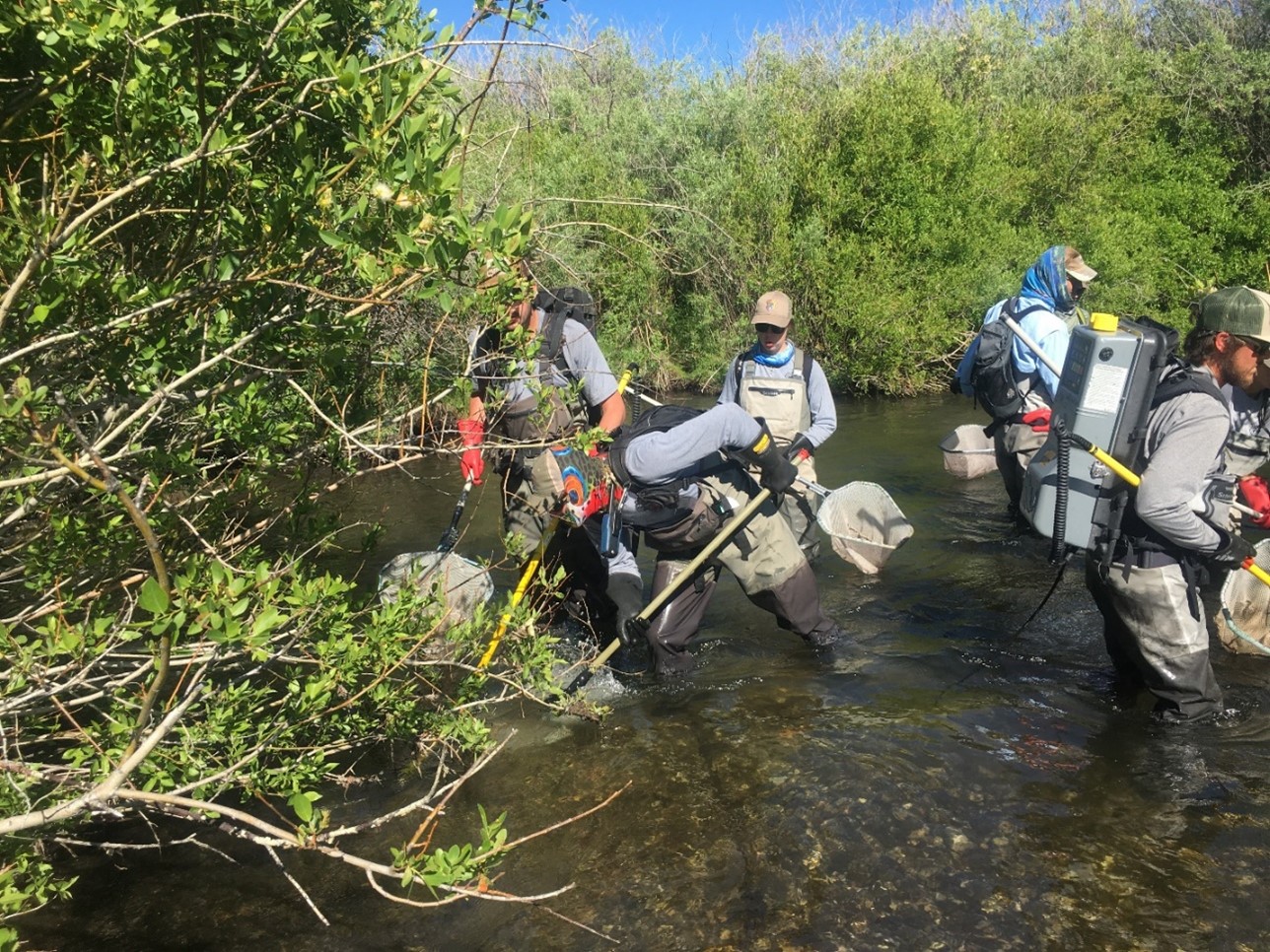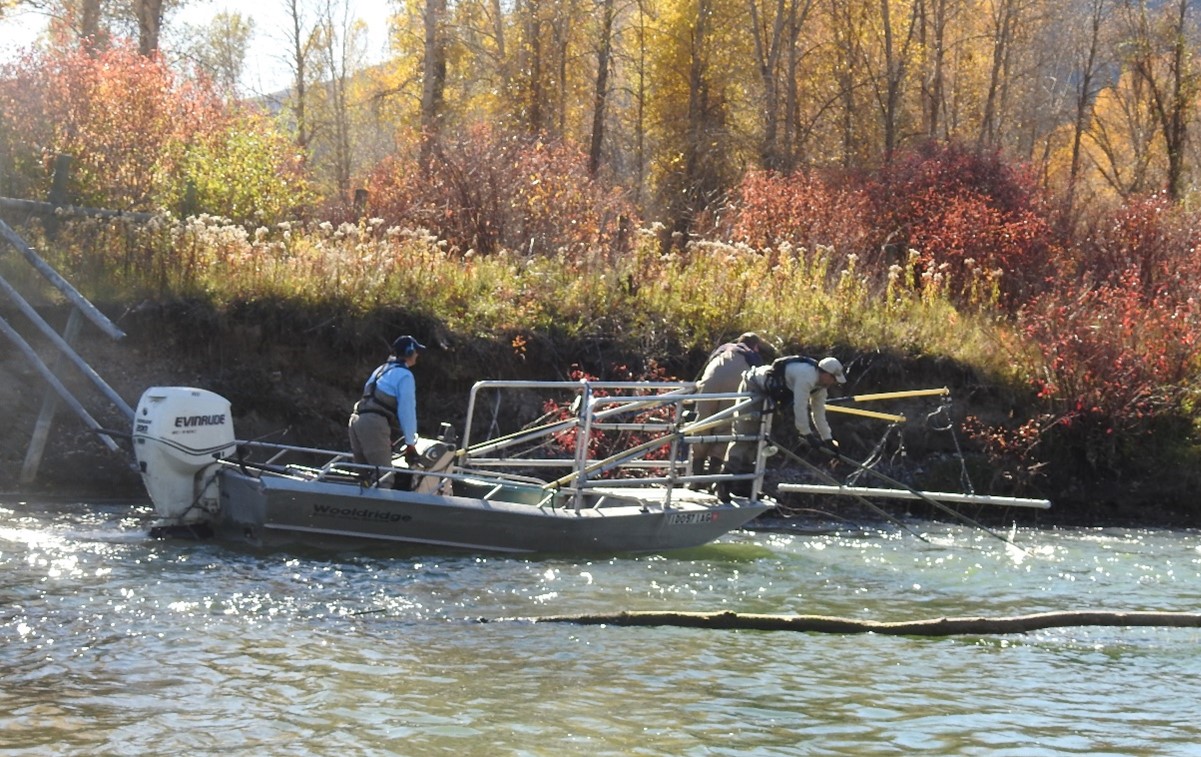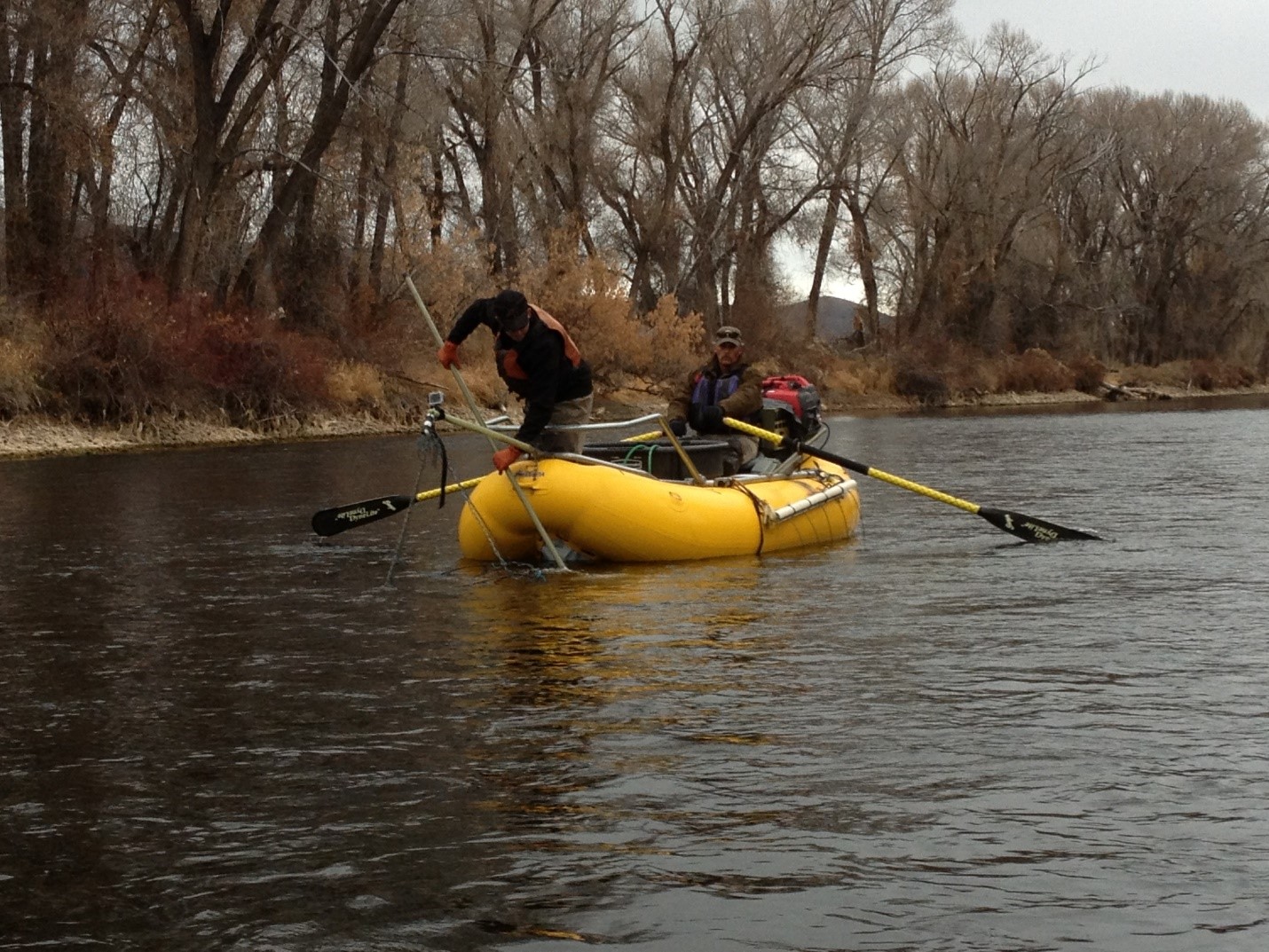Do you ever wonder how biologists are able to catch and sample so many fish? They cheat! Biologists commonly use electrofishing methods to “stun” fish so that they can easily be caught.
How does electrofishing work?
An electrofishing unit puts out an electric field into the water so that fish in close proximity (2-4 feet) can be “stunned”. Typically, when a fish encounters the electrical field their muscles contract, drawing the fish towards the electricity, which allows the biologist to net and place the fish in a bucket of fresh water. During fish sampling surveys, one person operates the electrofishing unit while other crew members actively net fish.
Why do biologists electrofish?
Biologists use electrofishing as a means to capture fish so that they can collect important information about the fish and the overall population. Data collected can include fish length, weight, scales (used to age the fish), and fin clip (DNA for genetic analysis). Biologists can also apply a tag or mark to individuals during these surveys, which allows them to obtain information necessary for research and management. Tags provide biologists with information on a variety of things such as population size, habitat use, migration timing, growth rate, and angler catch rates.





